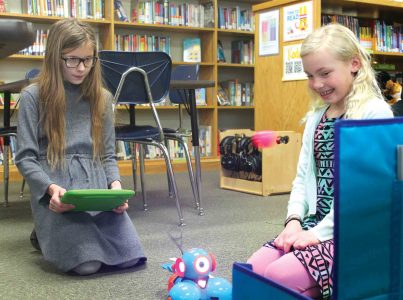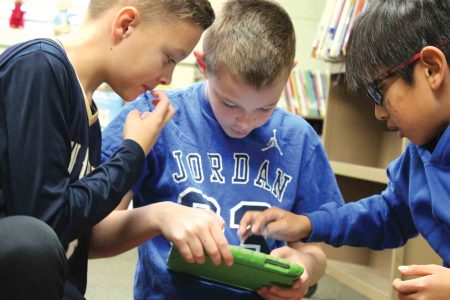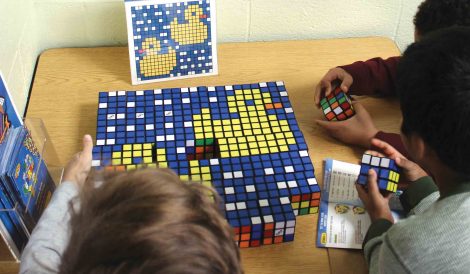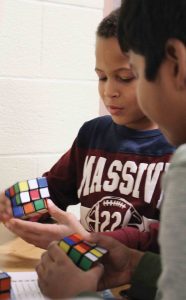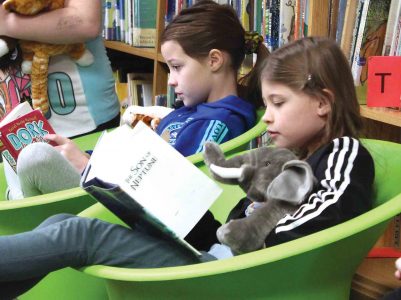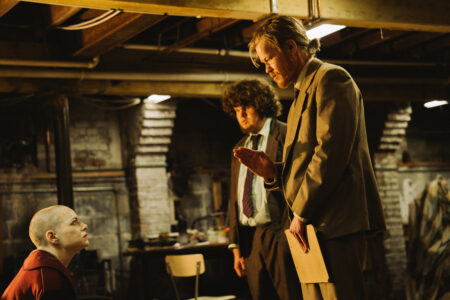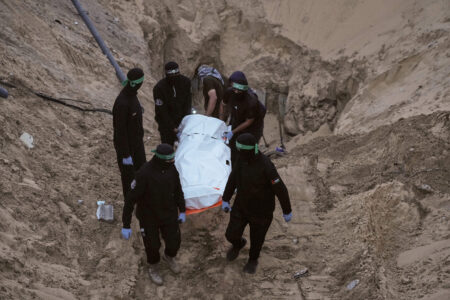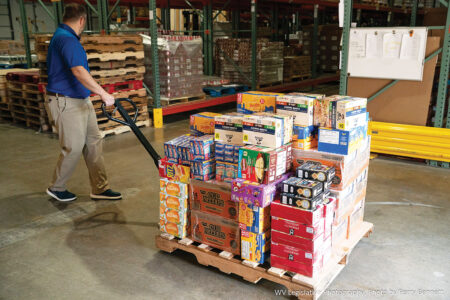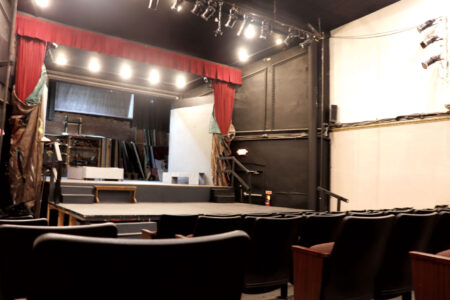Greenmont Elementary School library mixes technology, tradition
- Greenmont Elementary School fourth-graders Ainsley Hardesty, left, and Clara Tracewell, right, watch as a Dash robot throws a ball toward a basketball hoop. The duo programmed the robot to move and throw as part of a STEM project in the school’s library class. (Photo by Michael Erb)
- Greenmont Elementary School fourth-graders Cale Varney, left, Nick Romaine, center, and Seita Tooyama, right, gather around an iPad to figure out why their Dash robot failed to correctly execute a programmed set of actions. (Photo by Michael Erb)
- Greenmont Elementary School third-graders work to complete a picture of ducks created by properly arranging Rubik’s Cube puzzles as part of a STEM activity center in the school’s library. (Photo by Michael Erb)
- Greenmont Elementary School third-grader Michael Austin works on a Rubik’s Cube puzzle at a STEM activity center in the school’s library. (Photo by Michael Erb)
- Greenmont Elementary School third-graders sit in comfy chairs and cuddle stuffed animals while reading during library class at the school. The class mixes science and technology with traditional library activities. (Photo by Michael Erb)

Greenmont Elementary School fourth-graders Ainsley Hardesty, left, and Clara Tracewell, right, watch as a Dash robot throws a ball toward a basketball hoop. The duo programmed the robot to move and throw as part of a STEM project in the school’s library class. (Photo by Michael Erb)
VIENNA — Clara Tracewell and Ainsley Hardesty were intent on making a basket Thursday.
“We are trying to program Dash to go forward and shoot the basketball into the hoop,” Tracewell said.
Using an iPad, the Greenmont Elementary School fourth-graders traded off programming and control of the Dash robot. The duo measured distance in centimeters, set the amount of power the robot would use to throw the ball, and looked at angles of approach. Throughout the room small groups of students were doing the same, then studiously recording their successes and failures.
“We’ve gotten a few hoops,” Hardesty said.
The challenge was part of the school’s library class, which in recent years has begun to use new technologies to supplement traditional texts.
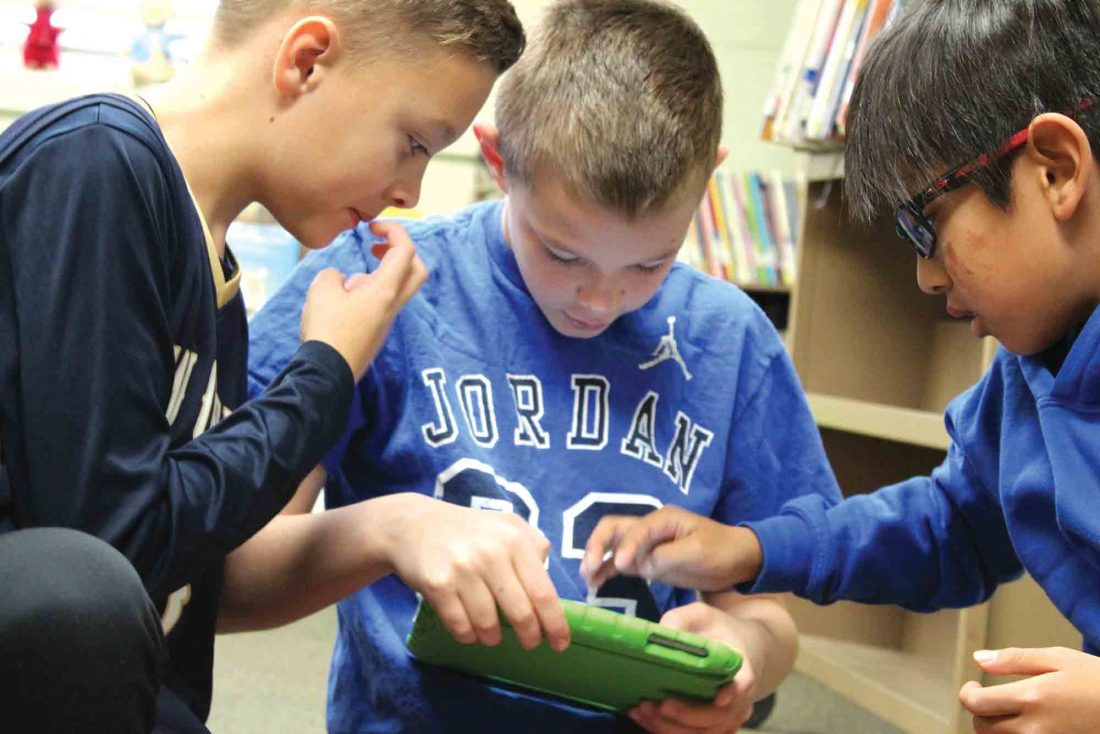
Greenmont Elementary School fourth-graders Cale Varney, left, Nick Romaine, center, and Seita Tooyama, right, gather around an iPad to figure out why their Dash robot failed to correctly execute a programmed set of actions. (Photo by Michael Erb)
While many think of school libraries being primarily about books and literacy, Greenmont Elementary School librarian Kevin Mace has expanded its scope to include science, technology, engineering and mathematics, also known as S.T.E.M.
“There’s always a little bit of a debate about the library position,” he said. “I know a couple of the libraries do things more traditionally, but that’s just not me. My strength is in technology and STEM.”
Greenmont, which this past year was named a national Blue Ribbon School of Excellence, has made several changes with its library in recent years. The adjacent computer lab has been removed and is being replaced with a makerspace which will allow students to do everything from printing 3D items to creating logos for t-shirts. Though there shelves filled with books, there also are iPads and robots, and students use games like Minecraft to encourage creativity and storytelling. Some of the desks and tables have been replaced with comfortable chairs and activity areas. Students are encouraged to select a stuffed animal to cuddle while they check out books.
“Every school does things different with their library,” Mace said. “This is what we do.”
Before becoming Greenmont’s librarian three years ago, Mace worked as a Wood County Schools technology integration specialist for seven years, traveling to different schools and working with teachers on how to use technology to enhance lessons and experiences for students. Much of what is being done at Greenmont, he said, is an extension of that work.
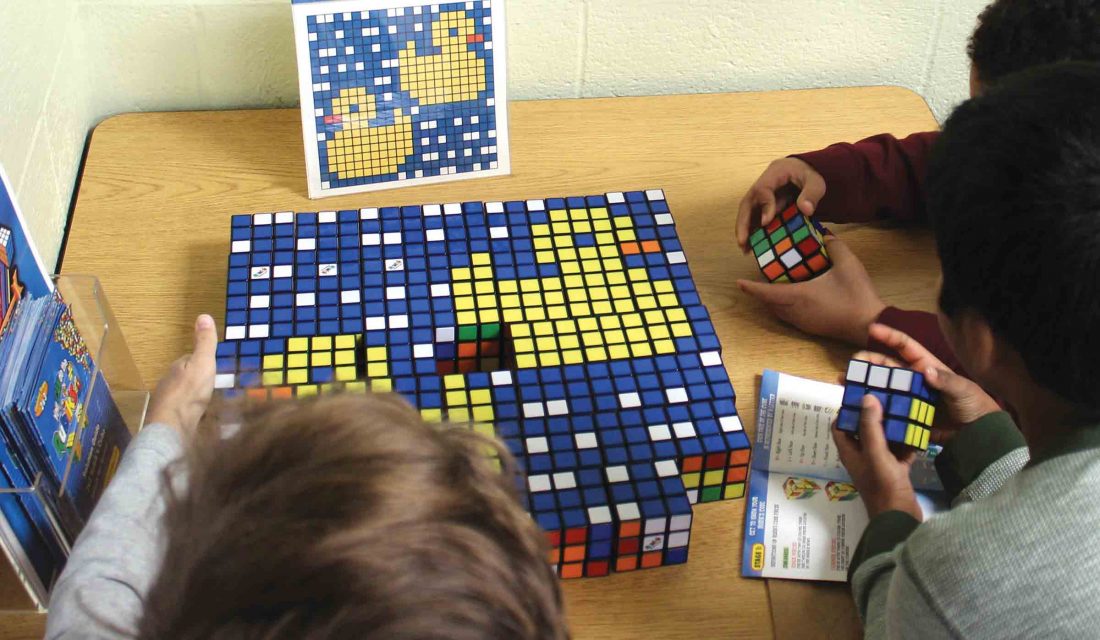
Greenmont Elementary School third-graders work to complete a picture of ducks created by properly arranging Rubik’s Cube puzzles as part of a STEM activity center in the school’s library. (Photo by Michael Erb)
Students learn the basics of coding using simple programs which allow them to drop “blocks” of code into place to get robots to move or complete tasks. Older students move into LEGO Robotics, which is used in both middle and high schools and is more complex.
“I always tell them to learn the basics,” he said. “It’s the same stuff as they move forward.”
Even the younger students in kindergarten and pre-kindergarten get an introduction to technology and future lessons.
“We do traditional library things, like getting into groups, being read a story,” he said. “Then we’ll get out one of the robots and they can take turns making it move, having the lights flash.”
Part of S.T.E.M. is learning how to adapt and problem solve when unexpected issues arise. Mace said he faced the same sort of challenge when it came to running technology programs in class with suddenly unusable technology.
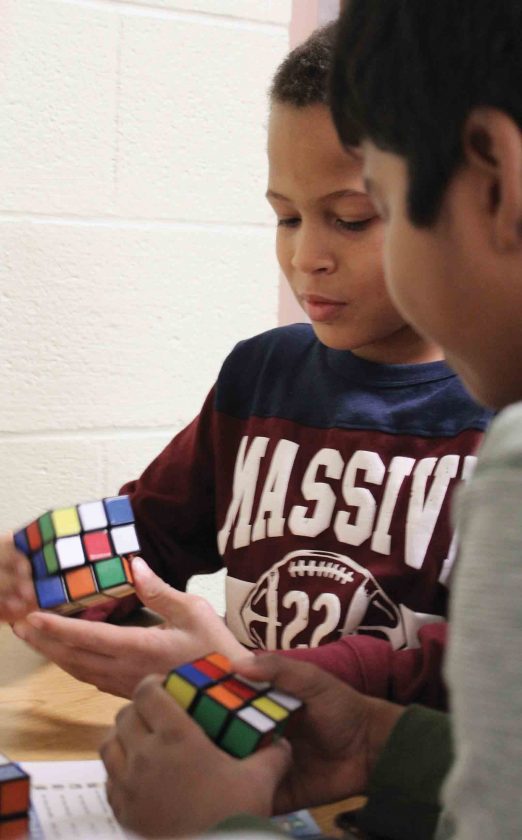
Greenmont Elementary School third-grader Michael Austin works on a Rubik’s Cube puzzle at a STEM activity center in the school’s library. (Photo by Michael Erb)
Wood County Schools was struck by a ransomware virus in late October and in early November had to take its system offline as computer hard drives became corrupted and inaccessible. The virus affected everything from files to phones to electronic door controls.
“We’re still trying to get creative,” he said. “This time of year I’m usually doing green-screen (projects), but then the virus hit and I can’t push that app out. That app is stuck until we get the whole system rebuilt.”
But Mace said it also provided a teachable moment.
“Part of what I teach is cybersecurity, the importance of good passwords and being careful online,” he said. “I was able to say ‘see, this is what can happen.’ ”
Some of the class technology, such as the iPads and robots, were largely unaffected by the virus and continue to be used. Some online programming lessons and tools however are simply not available now, so Mace turned to some low-tech lessons to teach high-tech concepts.
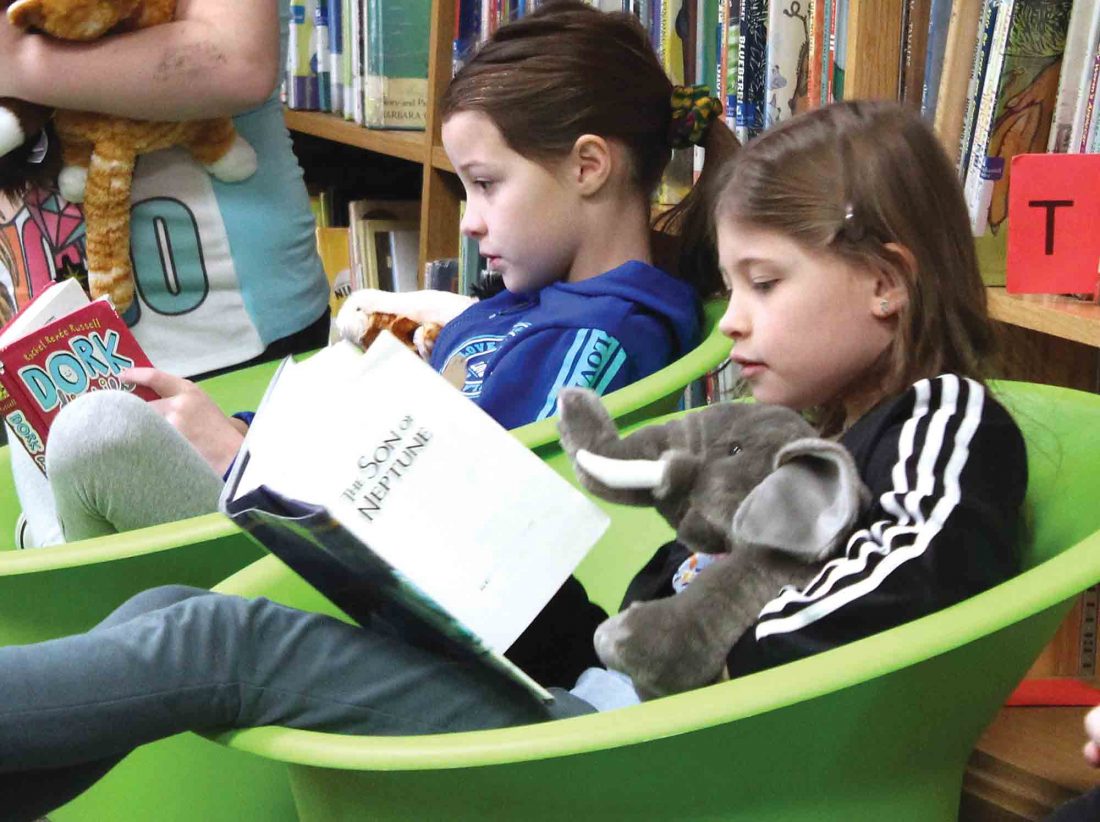
Greenmont Elementary School third-graders sit in comfy chairs and cuddle stuffed animals while reading during library class at the school. The class mixes science and technology with traditional library activities. (Photo by Michael Erb)
“Rubik’s Cube is a great example. There’s a lot of math involved,” he said. “I have an entire Rubik’s Cube kit with activities. I’d never solved a Rubik’s Cube on my own until I started teaching them.”
Mace said losing the online book checkout system also led to some classroom lessons.
“We’re back to paper and pencil for checking out books,” he said. “We’ve gone back to the card catalog.”
But, Mace said, even before the virus his class was a mix of technology and traditional teaching.
“I’m kind of a tech person, but I’m into the thinking process. I want them to focus on overcoming challenges,” he said. “I try to limit screen time. There’s lots you can do to teach the same thing without using the screens.”
Mace said his ultimate goal is to rotate classes between three areas: The library, the makerspace, and the school greenhouse. The greenhouse is built and awaiting utilities, and the school makerspace is expected to be completed in the near future.
Contact Michael Erb at merb@newsandsentinel.com.

